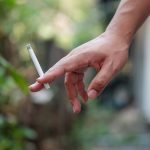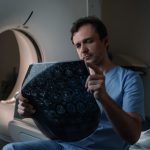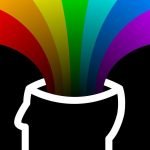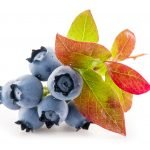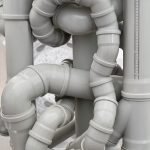Nature Cure Clinical Pearls: Ludwig Staden, Naturarzt
Sussanna Czeranko, ND, BBE
The principal physiological cause of all diseases is found in the blood, which causation we call dysaemia or defective composition of the blood. This is the root of all ailments, we therefore may say, [there] exists only one disease, which manifests itself in different forms.
-Ludwig Staden (Staden, 1900, p.100)Naturopathy’s materia medica consists of the principal elements which are derived from nature: light, air, water, heat and clay, beside non-stimulating diet, exercise and rest, electricity, magnetism and massage, calisthenics, physical culture, mental culture, etc.
–Ludwig Staden (Staden, 1902, p.16-17)A true Naturopath before all must be a teacher of health.
-Ludwig Staden (Staden, 1902, p.71)
During the formative years of Naturopathy, the lines were still blurred among water-cure therapies and the numerous branches of therapeutics that included, among other things, atmospheric cure, heliotherapy (or sun cure), physical culture, electrotherapy, mind culture, magnetism, phrenology, iridology, enemas, vibration, chromotherapy, mechanotherapy, violet ray, osteopathy, chiropractic, the Thure Brandt method, psychology, breath cure, zone therapy, homeopathy, dietetics, earth cure, herbs, and… the list was extensive in the first part of the last century.
Such eclecticism, while intriguing and rich in resources, was difficult to brand. Much was to be gained by organizing this broad range of therapies under 1 consistent framework. Benedict Lust not only recognized the remarkable potential of developing a medical system predicated on these valuable techniques and approaches, but he also grounded them in a philosophy of natural healing which resonated with thousands of patients. He rose to this task and was instrumental through his publications in galvanizing like-minded individuals who shared a love of natural healing to inaugurate the endurable and undefeatable Naturopathy. Although Benedict, with the powerful support from his wife, Louisa, would be identified as the architects of Naturopathy, there were others who stood beside them as this monumental, collective achievement took shape. In this regard, Ludwig Staden (Figure 1) stands out as a major contributor who played a determining role in both the revolutionary establishment of Naturopathy and in its ensuing evolution.
Ludwig Staden’s Contributions
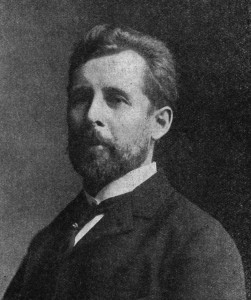
Figure 1. Staden
Unfortunately, we have very little formal biographical detail (such as genealogy, birth or death dates, and early professional work); however, he produced outstanding articles, written for Benedict Lust’s publications, The Kneipp Water Cure Monthly and The Naturopath and Herald of Health, from which we can glean important historical detail as well as clinical pearls. What we do know of this man is that he practiced hydrotherapy at 346 Schermerhorn Street in Brooklyn, New York. His wife, Carola Staden, shared his love of natural healing, specializing in gynecology. Her contemporaries knew about her knowledge and skill with the Brandt-Thure method – an invaluable therapy for women suffering the deformities and dysfunction often resulting from the constricting fashionable corset, among other repressive practices of the era. Ludwig himself specialized in pediatrics and actively utilized most of the principal therapies of his contemporary naturopathic colleagues.
He wrote the first seminal articles on Naturopathy at a time when Naturopathy was in its launch and just beginning its flight. There are 2 two outstanding articles, in particular, which reflect his discerning, insightful understanding of the new field of Naturopathy. In fact, the very first defining article, entitled “What is Naturopathy?” appeared in the inaugural issue of the very first journal on Naturopathy, published in January of 1902. In this pioneering and groundbreaking piece, Staden articulates the 12 principles of Naturopathy, establishing a baseline for the ensuing generations of naturopaths to follow. His innate, pragmatic understanding, coupled with a wisdom of what Naturopathy meant, still is alive and remains the cornerstone of current Naturopathy. Staden endures in the literature as one of our most articulate, prescient pioneers. A sampling of what he wrote and shared broadly emphasizes his critical, formative role, complementing other giants such as the Lusts, Kuhne, Just, and Lindlahr. For example:
The true Naturopath will always treat individually; he is treating the person, not the case. Each person is differently constituted; consequently every case must be different.
(Staden, 1902, p.15)
The power of healing is within us; Nature only, Nature alone, solves the problem; man presses the button, Nature does the rest.
(Staden, 1902, p.16)
[Naturopathy] looks upon the fever as the greatest natural healing process, which should never be suppressed by poisons like quinine, antipyrin, etc., but should be guarded like a wild fire … Suppressed fever diseases cause chronic diseases.
(Staden, 1902, p.17)
His second crucial contribution, entitled, “Acute and Chronic Diseases,” appeared in the second issue of Benedict Lust’s inaugural naturopathic journal, The Naturopath and Herald of Health. Here appear more of the pearls that to this day resonate with naturopathic doctors:
A characteristic symptom of acute disease is the fever; it is a process of combustion of accumulated morbid matter in the entire system which has transformed in fermentation, it is therefore a self-healing and self-purifying process of Nature. It stands to reason that such a process should never be disturbed and suppressed by force but must be assisted and directed. Medical science, misunderstanding the natural and beneficent mission of the fever, looks upon it as an enemy of man and tries to repress it forcibly by medicinal chemical preparations.
(Staden, 1902, p.69)
Naturopathy on the contrary perceiving that the fever is man’s greatest friend, simply recognizes that every particle of its cause must be dissolved and excreted from the body, which cannot be accomplished but by permitting Nature to do its work without restraint, and Nature always will do this work completely and free of danger to life, if assisted and controlled by natural means.
(Staden, 1902, p.69)
Chronic diseases are, as we have mentioned, the result of acute diseases suppressed by medicine, or of acute diseases which have not become properly developed in consequence of too much accumulation of morbid matter and therefore very low vitality, or they are the consequence of vaccination.
(Staden, 1902, p.70)
A true Naturopath before all must be a teacher of health.
(Staden, 1902, p.71)
Very early on, Staden began contributing a monthly column in the German edition of Amerikanische Kneipp Blätter in mid-1898, and then continued providing English articles for Lust’s editions of The Kneipp Water Cure Monthly [1900 and 1901]. In 1900, Staden entitled his monthly column “Hydropathic Medical Adviser,” and in the following year the name of the column was changed to “Naturopathic Adviser.” He very soon was receiving letters from around the world. His initial offerings metamorphosed into a regular feature which provided free health advice to its readers. Each month he would present his recommendations based on the “Natural Method of Healing,” the term actually code for the Kneipp water-cure therapies that were popularized by Friedrich Eduard Bilz in his book of the same name, published in 1898. This 2-volume encyclopedic literary work, with which Staden was very familiar, promoted Father Sebastian Kneipp’s healing wisdom in its 2074 pages. Considered at the time as one of the most comprehensive books on Kneipp’s work, Bilz’s book, as well as his other writings, offered a road map for those embarking on a path as healers.
Staden placed ads in Benedict Lust’s journals, indicating that his clinic was the “first Light and Water Cure Institute” in Brooklyn (Figure 2). The therapies offered included a broad range: “treatment of all chronic diseases by the entire combined method of Natural Healing according to Priessnitz, Kneipp, Kuhne, etc.; Light Therapy, according to Rikli and Drs. Gebbard, and Berlin; Electric Light Baths; Swedish Massage and Gymnastics; Thure-Brandt massage (internal massage); … diet cure, Vegetarian, Saline (Nährsale) Theory.” The offerings found in the Staden’s clinic were quite typical of other early Nature Cure practitioners. Henry Lindlahr, Benedict Lust, Carl Strueh, and others announced similar modalities in their own advertisements.
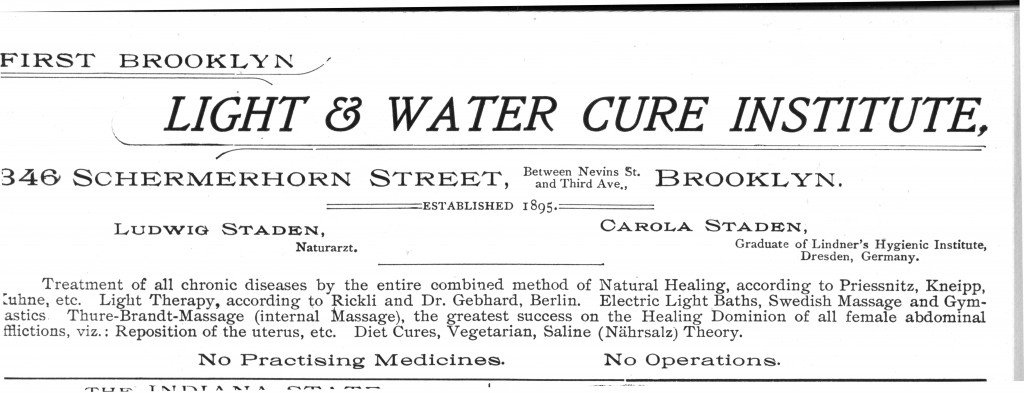
Figure 2. Staden ad 1900
Staden’s Clinical Advice Columns
In his advice columns, “Hydropathic Medical Advisor” and “Naturopathic Advisor,” Staden was discreet regarding the patient’s identity and did not disclose any portion of the letter sent to him. He simply identifies the person’s first name, the initial of the last name, and place of residence. Sometimes he acknowledges the person’s questions and indicates that a letter has been sent to the person’s address. In other cases, Staden counsels the person on his or her complaint(s), giving a detailed description of the measures needed for the particular ailment(s).
Employing such a professional format, from January 1900 to March 1902, Staden wrote his column 22 times. Within that cluster, the number of inquiries regarding digestive complaints totaled 19. To benefit from this rich material, let’s look more closely at the common complaint of constipation, for example, and observe 4 treatment plans that Staden shared with his readers. If we examine these cases of constipation, what we discover is that Staden was meticulous in the small space allotted to him and that he individualized each protocol for the patient and not the disease. As well, I am including here a fifth fascinating case about diabetes mellitus.
Case 1
Charles D, of Hartford. Person is told that he is “suffering from nervousness, giddiness and constipation.” (Staden, 1900, p.108) The prescription addresses diet, and incorporates both Louis Kuhne’s friction hip, as well as Sebastian Kneipp’s three-quarter pack, hardening by barefoot walking, and enemas. The accompanying vegetarian dietary plan consists of “malt coffee, milk, whole wheat bread, fresh green vegetables, cereals, especially plenty of fruits and berries.” (Staden, 1900, p.108) He presents a naturopathic integrative plan recommending the following:
Every morning and afternoon a hip bath [sitz bath], 80° to 85° F [27° to 29° C], 20 to 25 minutes. In the bath massage the abdomen by way of kneading or pour continuously water on it with a dipper. Once a week three quarter pack, 1 to 1.25 minute duration, hereafter one of the hip baths. Every night wet abdominal bandage [compress], early in the morning walking barefooted in your garden. Daily injection (98° F/37° C), one quart with 2 – 3 tablespoon of lemon juice.
(Staden, 1900, p.108)
Case 2
In a second case, Emma L. D., of Wunsocket, Rhode Island, presents with a heavy case of constipation. Staden recommends a fruit diet and hydrotherapy with a few modifications. “Try every night a wet stomach bandage [compress], every morning cold sponge bath with a good rubbing of the whole body to follow, then a warm enema 1 – 3 quarts and directly after evacuation a cold small enema about ½ wine glass which has to remain in the bowels.” (Staden, 1900, p.187) The need for daily exercise is also raised by Staden. He advises, “Daily plenty of movements in free [fresh] air, promenades or moderate riding of bicycle.” (Staden, 1900, p.187) He also recommends a hot sitz bath [98°F/37°C] for a 25-minute duration twice a week, followed by washing with cold water and every other day alternating this with a cold half-bath for 1 to 3 minutes. (Staden, 1900, p.187) Further, he counsels the patient to drink “every evening one cup of buckthorn tea which has to cook for 25 minutes.” (Staden, 1900, p.187)
Case 3
A third case illustrating Staden’s individualized treatment plan for obstinate constipation is directed to reader C. G. R., of Milwaukee, Wisconsin, who includes an additional question: “Would warm water injections (enema) be hurtful; that is, using them [regularly] to make bowels move?” (Staden, 1902, p.101) Staden answers: “Injections are never hurtful; apply one of thin peppermint, yarrow and rice tea mixed [using] about 1 ½ quarts, 95° F/35° C.” (Staden, 1902, p.101) The herbal teas used in the enema had several benefits which Staden explains: ”[The herbs in this enema] release the suffering and irritated organs of blood, they disinfect the accumulations in the bowels which mostly are in a condition of fermentation and evacuate them easier.” (Staden, 1901, p.120)
With regard to the treatment of constipation, the contemporary naturopathic doctor will not be surprised by the medley of several therapies. Having read over a half-dozen cases presented by Staden, I can report that he consistently made unique recommendations for each patient in dietary, hydrotherapy applications, and physical exercise. In the particular case of obstinate constipation cited above, Staden emphasizes dietary changes recommending that the patient forego breakfast and “instead drink one cup of fennel seed and anise seed tea, mixed with one teaspoon of lemon juice and little honey.” (Staden, 1902, p.101) He continues with a vegetarian regime of “apples, oranges, dates, figs, nuts and whole wheat bread … but avoid cabbage, lentils, dry peas and beans, also not many potatoes, but you may eat rice every day.” (Staden, 1902, p.101) He also recommends: “Do not drink during or directly after meals.” (Staden, 1902, p.101)
In regards to the hydrotherapy suggestions, Staden proposes a bed steam bath lasting 1½ hours at 85°F/29°C, followed by a sitz bath for 10 to 15 minutes or a hot air bath. He also advises a daily morning cold sponge bath combined with a cold half-bath 1½ minutes 3 times a week. (Staden, 1902, p.101) Following the cold sponge bath, Staden instructs a “good rubbing of the whole body and exercises … During the night wet abdominal bandage; and a warm foot bath now and then.” (Staden, 1902, p.101)
Cold water applications were applied cold and quickly. The standard established by Sebastian Kneipp for a cold bath was 1 minute, and always followed with some form of exercise to warm the patient. If the patient was weak or unable to participate in exercise, s/he was then advised to rest in bed, covered with warm blankets after a cold water application.
Priessnitz is credited with developing the half-bath that Staden often employed. For the half-bath, an ordinary bath tub is used and water is added to the level of the umbilicus of the patient. “This is really a shallow bath, the water reaching to the umbilicus, but its application involves the whole surface of the body.” (Hinsdale, 1910, p.243) The half-bath is often assisted with a bath attendant who helps apply friction to the back and sides of the body while the patient dashes water against the chest and arms applying friction. (Pope, 1909, p.147) Curan Pope thought of the half-bath as a “powerful tonic and stimulative measure … and should take precedence over the much abused plunge.” (Pope, 1909, p.148)
Case 4
Fl., of St Andrews, Ontario, writes: “I am suffering with pain in my stomach as well as pain in my right side and constipation. There are also quantities of long threads sometimes covered with mucous and many flakes of this white substance.” (Staden, 1901, p.257) Staden assesses the problem as “indigestion due to inflammation of the inner membranes of the stomach and partially bowels.” (Staden, 1901, p.257) Again, we are not party to the case in terms of specific symptoms; however, we can appreciate the treatment plan. The patient is advised to do “a wet hayflower shirt* every day with an extra wet compress on the abdomen [for] 1 to 2 hours [that is followed by a] lukewarm sitz bath 85° F/29° C for 10 – 12 minutes.” (Staden, 1901, p.257) The hayshirt treatment involves also a hot water bottle placed on the feet. He prescribes a daily enema using a weak chamomile tea 90°F/32°C of 1 quart. In addition, Staden instructs the patient to apply an abdominal wet clay compress every other night and an abdominal compress every night.
A non-irritating diet is prescribed, consisting of thick soups, raw and stewed fruits. In the evening, a cup of Angelica root and gentian tea is taken with honey and 1 tsp of lemon. (Staden, 1901, p.257)
Case 5
Fr. T. W., of Watertown, Texas, seeks help from Staden for diabetes and confides that he has limited means. Staden is reassuring and confident: “There is no doubt that diabetes can be cured by Naturopathy, so do not be so downhearted; only energy and willpower will help you along.” (Staden, 1901, p.120) Staden offers a set of instructions in full support of this diabetic person. First on the list are a series of water applications to be done every other day: “Three quarter pack with a hot bottle to the feet [for] one hour; [followed by] sponge bath 80° F/27° C and a sitz bath 80° F/27° to 70°/21° C [for] 10 minutes.” (Staden, 1901, p.120)
Another element of treatment included sun baths, taking care to not expose the head directly to the sun. At night, Staden recommends sleeping in a tent outdoors and applying an abdominal compress. Sun baths were popularized by Arnold Rikli, and sleeping outdoors was the brainchild of Adolf Just.
On the subject of dietary changes in this case, the milk diet is prescribed. Staden counsels:
The diet shall consist of nothing else but three quarts of skim milk daily, divided in equal parts during 10 to 12 hours, drink the milk through a glass tube [a drinking straw]. Have the urine examined every other day. As soon as there is no more sugar in the urine, continue the milk diet for 8 to 10 days, then add unsalted fresh pot-cheese in small quantities, then a little buttermilk.
(Staden, 1901, p.120)
His rationale for the milk diet is to decrease urine flow. Staden then becomes very specific about the food to be eaten, and he is clearly advising this patient to eat vegetarian:
Then commence with fruits, and a few nuts, finally lettuce prepared with a little thinned lemon juice, spinach, asparagus, watercress, cucumbers, an egg [scrambled], some potatoes, toast, radishes, the juice of lemons, organs, melons, strawberries, etc., mixed with a little water.
(Staden, 1901, p.120)
His final suggestion is to normalize bowel function. For constipation, he proposes a warm tea made of bilberry leaves as an enema, and – if diarrhea is the problem – a tea of oak bark in an enema.
Staden’s Legacy
The above sampling of Staden’s 5 cases, preserved for us in his regular writing in the Benedict Lust journals, exemplifies the best of Naturopathy from this era. Staden consistently demonstrated that a formulaic approach to health care was not always in the patient’s best interests, nor the optimal goal of patient care. With simple hydrotherapy applications, for example, combined with dietary changes, Staden provided tools for the patient to use.
As we become more familiar with this formative era in our profession’s development, we look to historical figures like Staden to see their courage, virtuosity, vitality, and vision. The literature he and his colleagues left behind is a precious record of how naturopathic medicine in North America took root and helped patients. Always, the record points to exquisite connections between doctor and patient. Always, the literature demonstrates deep conviction and adherence to the principles and philosophy of the medicine. Staden himself articulated these principles at the beginning. He was present at the very moment that Naturopathy was spawned and birthed in New York City. As outstanding examples from that era, we can gain much from these 5 cases of constipation and diabetes, and from all of his abundant contributions. He treated each individually and customized the treatment plan for the patient and not the disease, which is the strength that Naturopathy offers to patients. Like many of the giants of this pioneering era, he showed us how.
Note: Please refer to NDNR’s September 2012 issue on the “Hayshirt.”
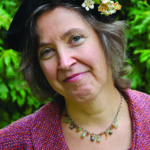 Sussanna Czeranko ND, BBE, incorporates “nature-cure” approaches to primary care by including balneotherapy, breathing therapy, and nutrition into her naturopathic practice. Dr Czeranko is a faculty member working as the Rare Books curator at NCNM and is currently compiling a 12-volume series based upon the journals published early in the last century by Benedict Lust. Four of the books have been published: Origins of Naturopathic Medicine, Philosophy of Naturopathic Medicine, Dietetics of Naturopathic Medicine, and Principles of Naturopathic Medicine. In addition to her work in balneotherapy, she is the founder of the Breathing Academy, a training institute for naturopaths to incorporate a scientific model of breathing therapy called Buteyko into their practice. She is a founding board member of the International Congress of Naturopathic Medicine and a member of the International Society of Medical Hydrology.
Sussanna Czeranko ND, BBE, incorporates “nature-cure” approaches to primary care by including balneotherapy, breathing therapy, and nutrition into her naturopathic practice. Dr Czeranko is a faculty member working as the Rare Books curator at NCNM and is currently compiling a 12-volume series based upon the journals published early in the last century by Benedict Lust. Four of the books have been published: Origins of Naturopathic Medicine, Philosophy of Naturopathic Medicine, Dietetics of Naturopathic Medicine, and Principles of Naturopathic Medicine. In addition to her work in balneotherapy, she is the founder of the Breathing Academy, a training institute for naturopaths to incorporate a scientific model of breathing therapy called Buteyko into their practice. She is a founding board member of the International Congress of Naturopathic Medicine and a member of the International Society of Medical Hydrology.
References
Hinsdale, G. (1910). Hydrotherapy. Philadelphia, PA: W. B. Saunders Company, pp. 466.
Pope, C. (1909). Practical Hydrotherapy. Cinncinnati, OH: Cincinnati Medical Book Company, pp. 646.
Staden, L. (1900). Hydropathic medical adviser. The Kneipp Water Cure Monthly, I (6), 108.
Staden, L. (1900). Hydropathic medical adviser. The Kneipp Water Cure Monthly, I (10), 187.
Staden, L. (1901). Naturopathic adviser. The Kneipp Water Cure Monthly, II (4), 120.
Staden, L. (1901). Naturopathic adviser. The Kneipp Water Cure Monthly, II (9), 257.
Staden, L. (1902). What is Naturopathy? The Naturopath and Herald of Health, III (1), 15-18.
Staden, L. (1902). Naturopathic adviser. The Naturopath and Herald of Health, III (2), 101.


